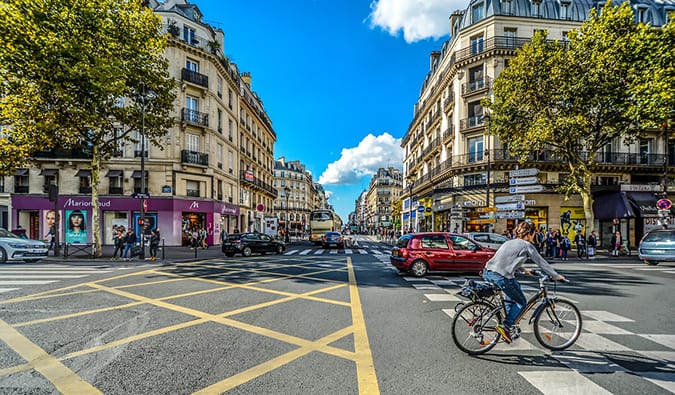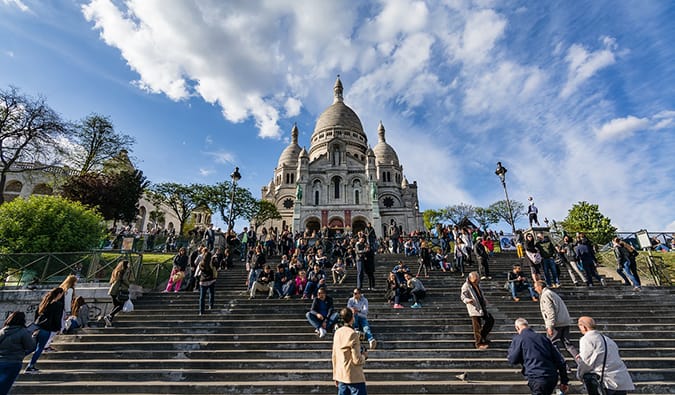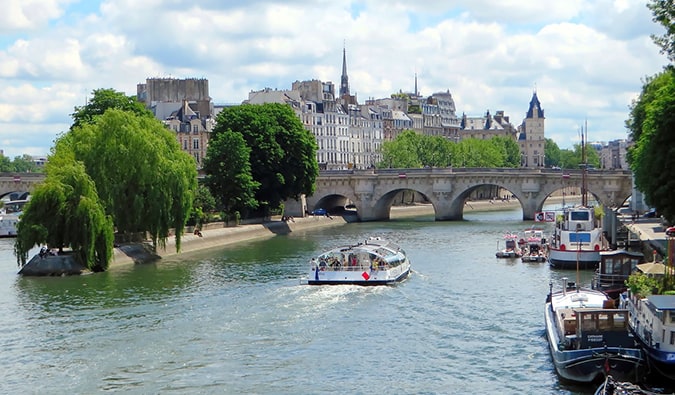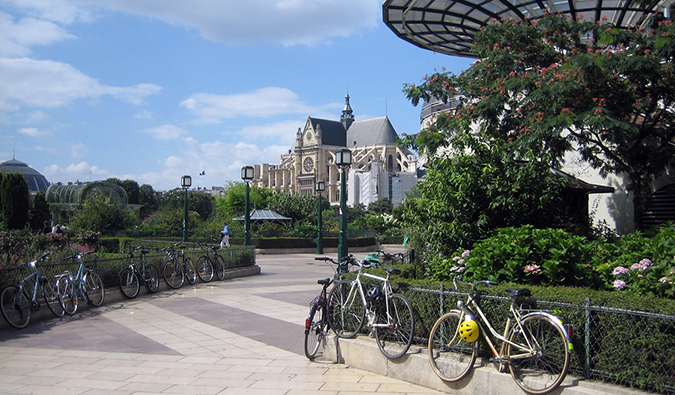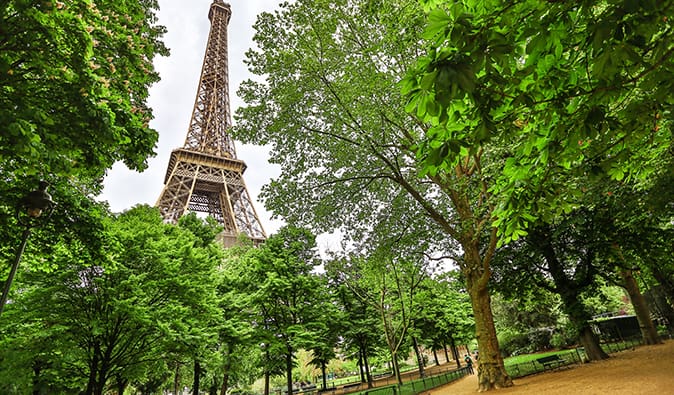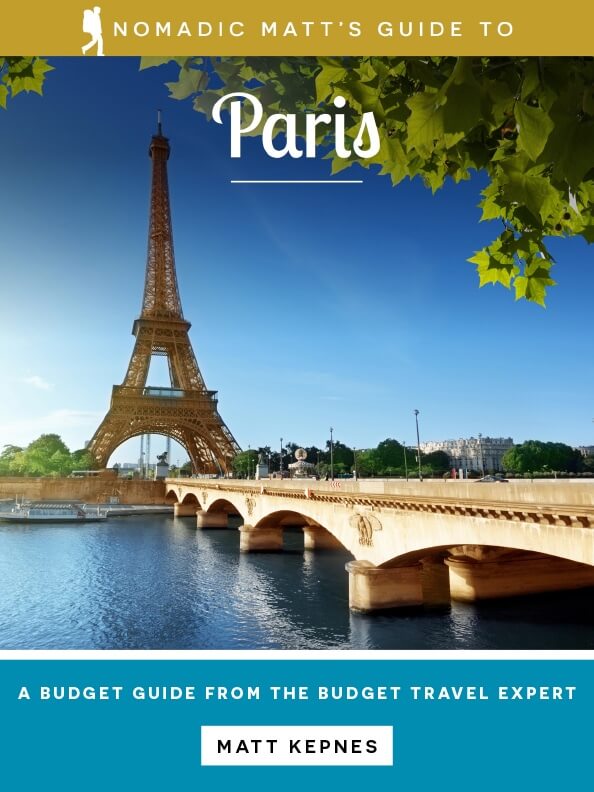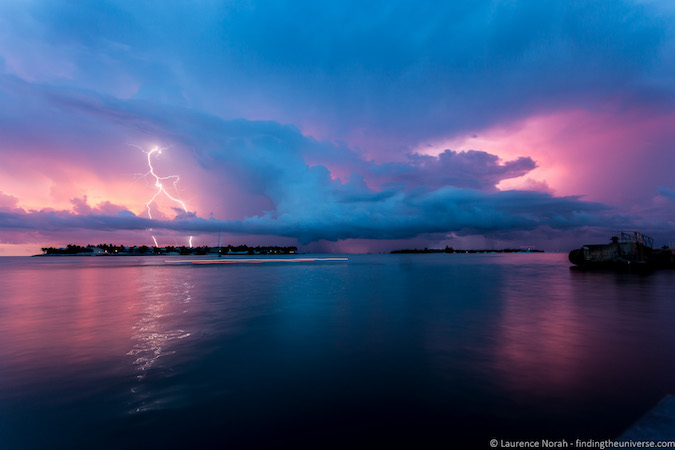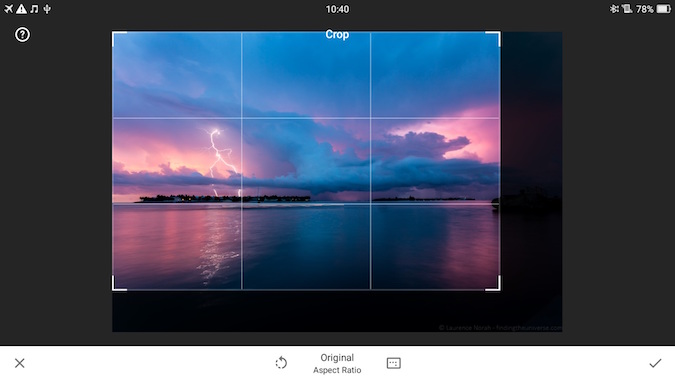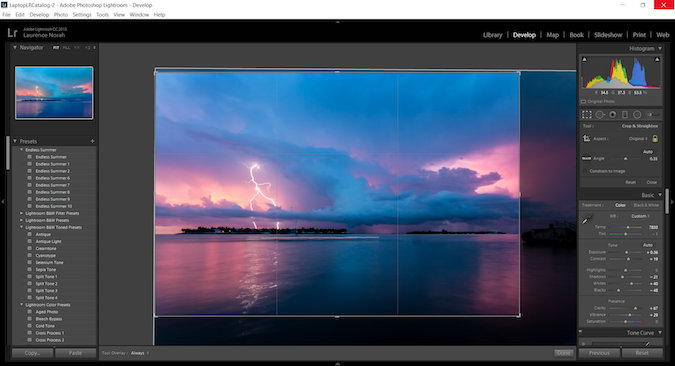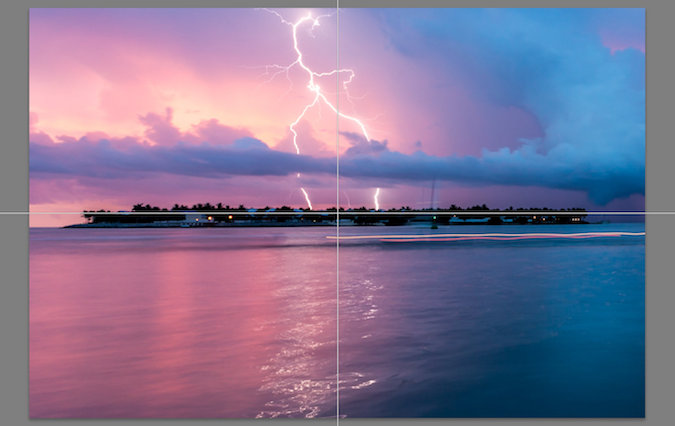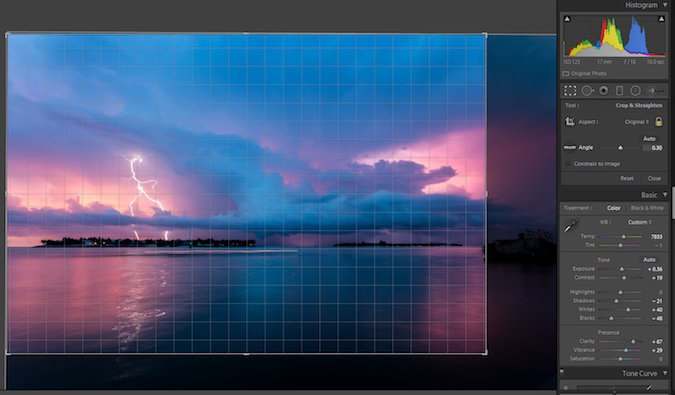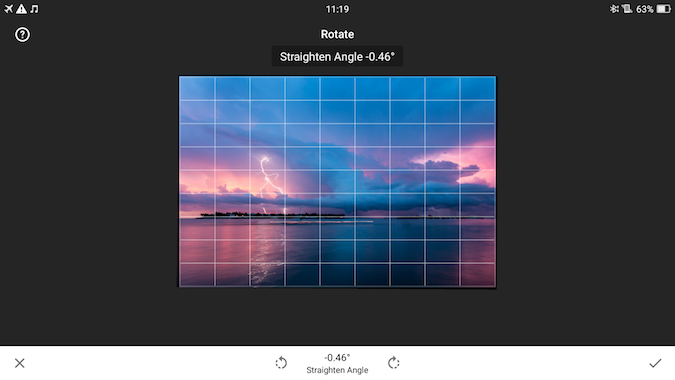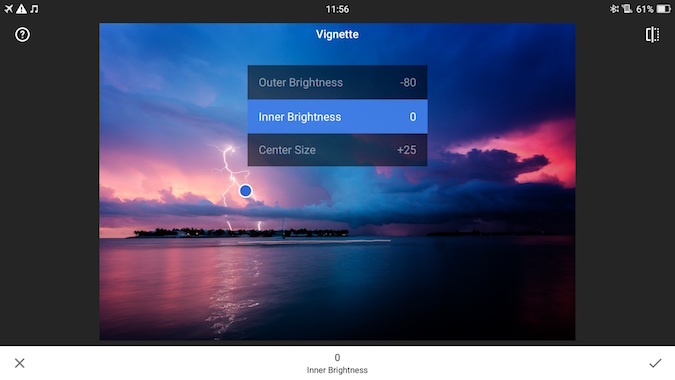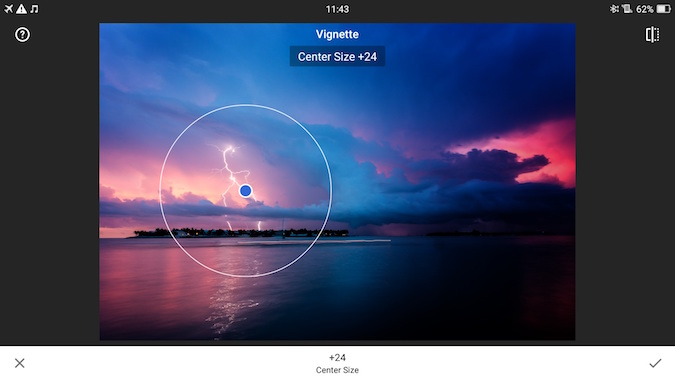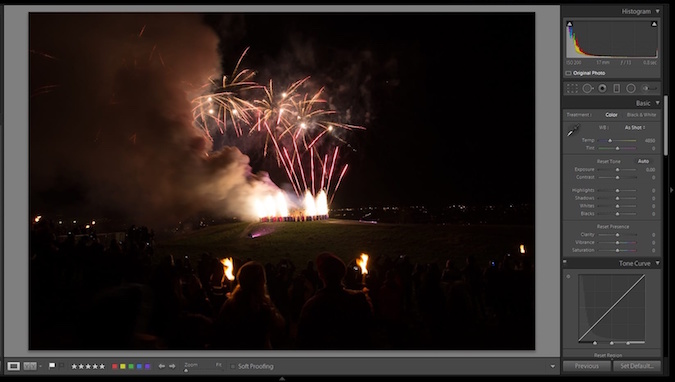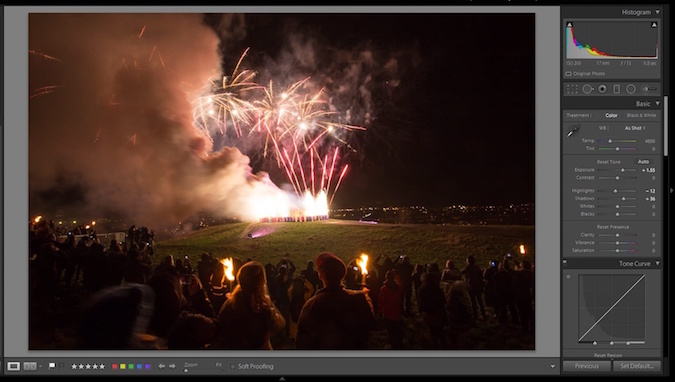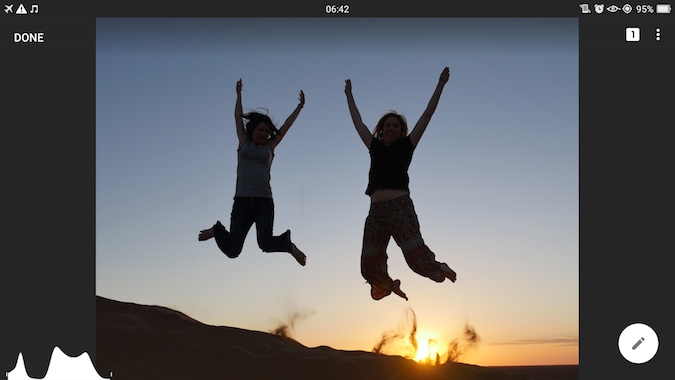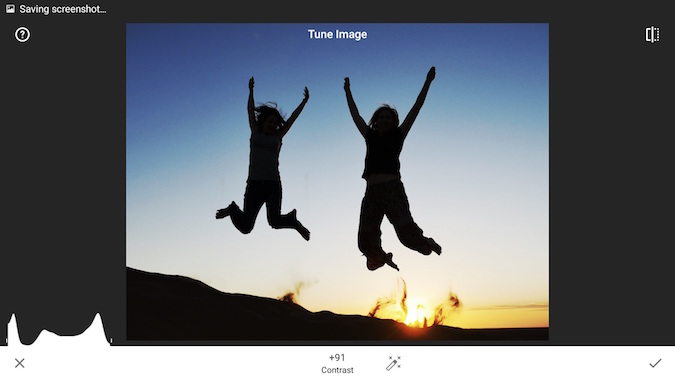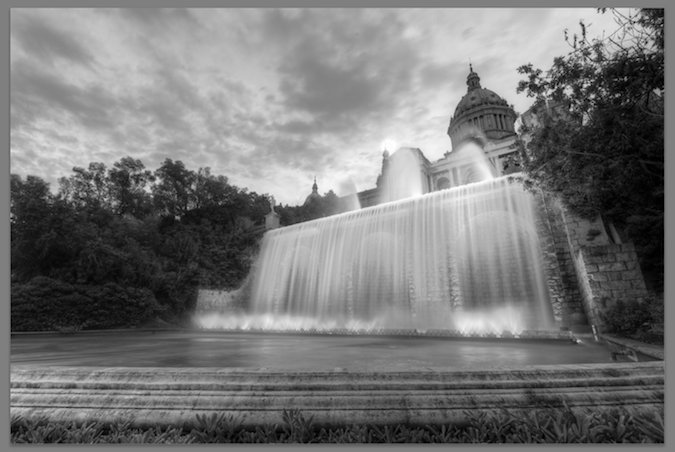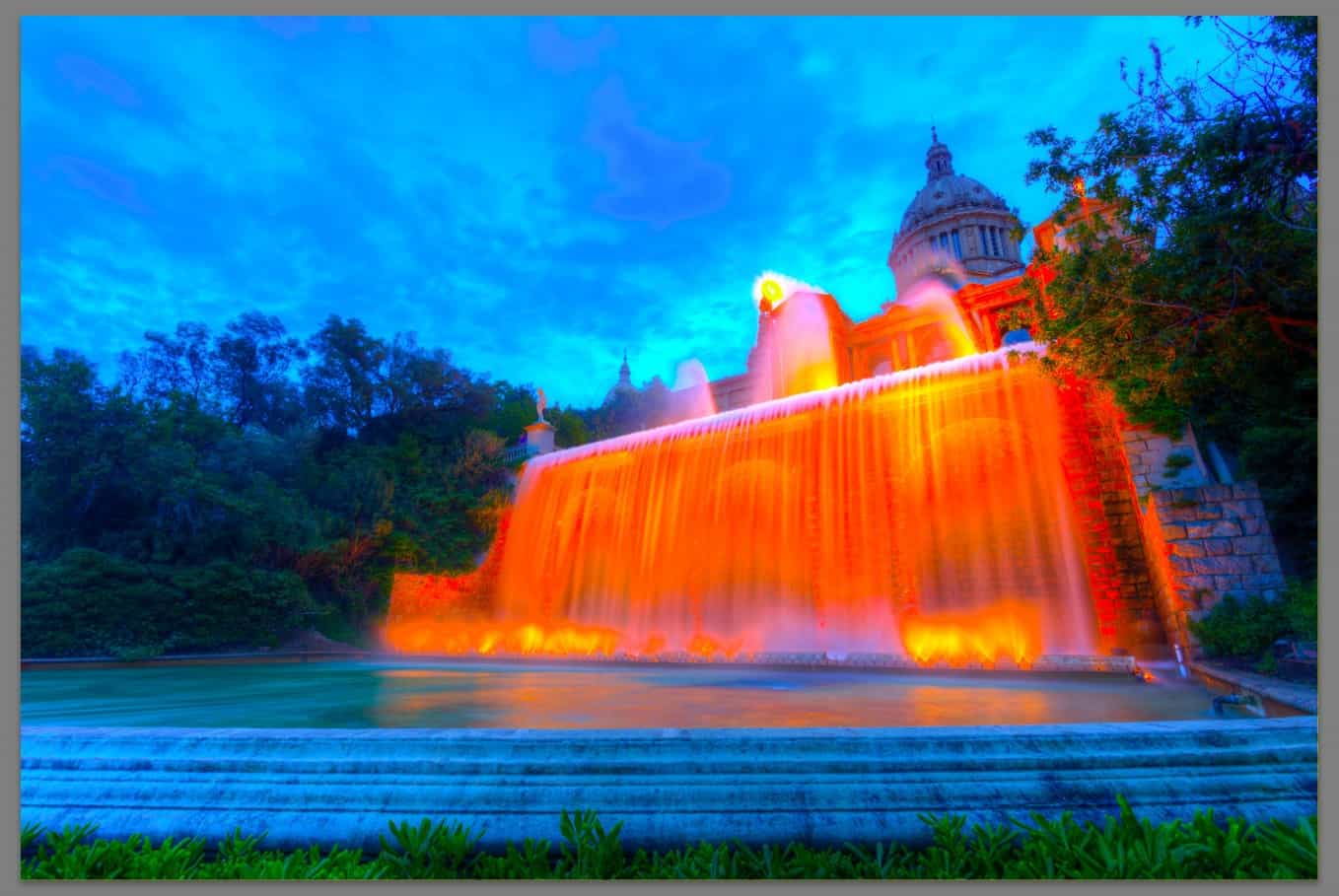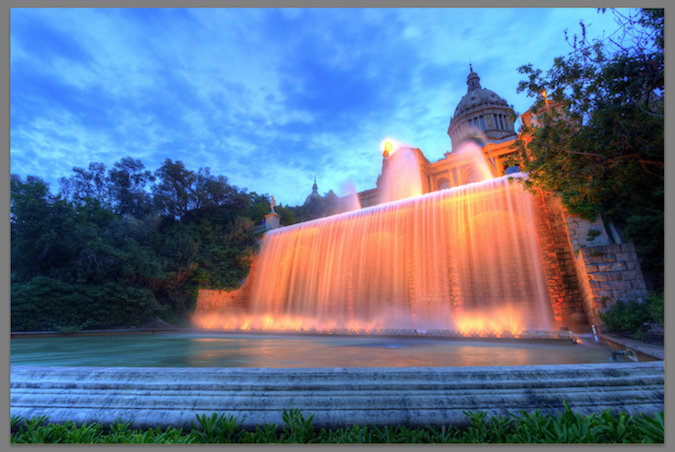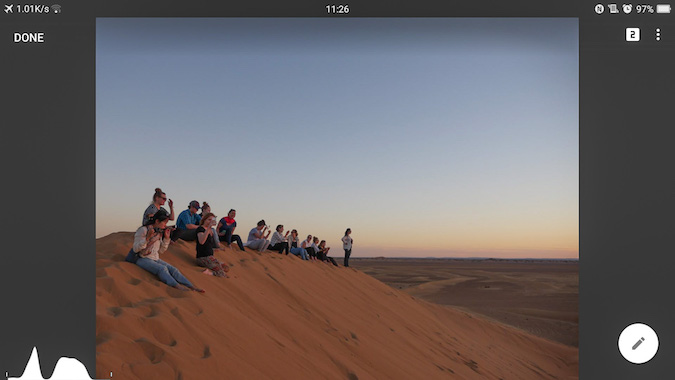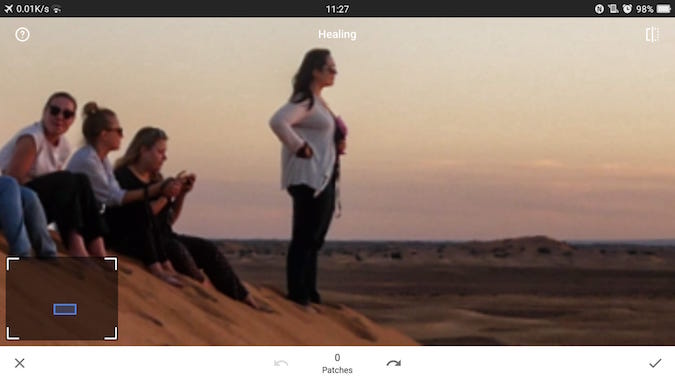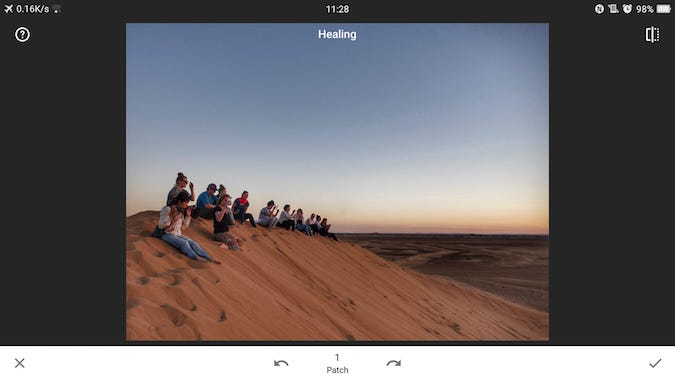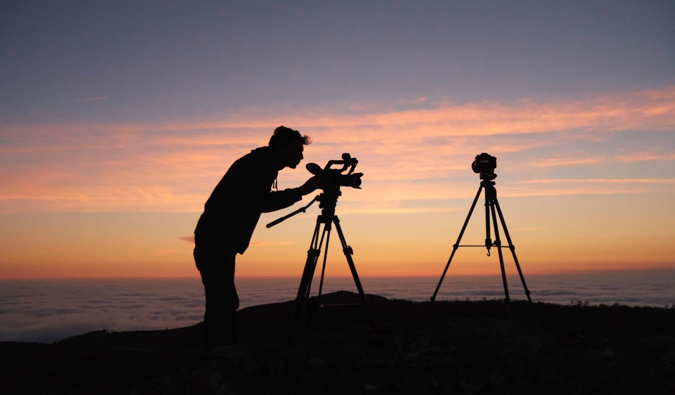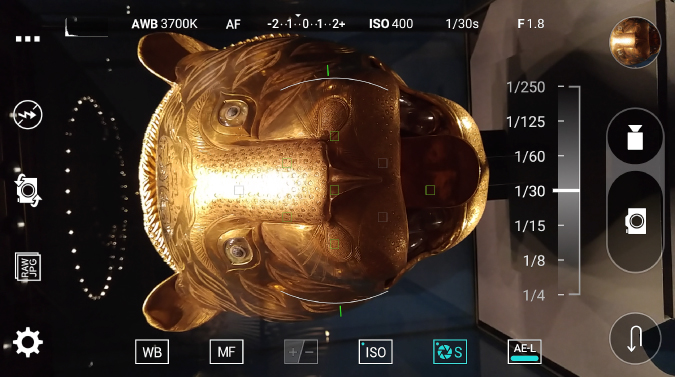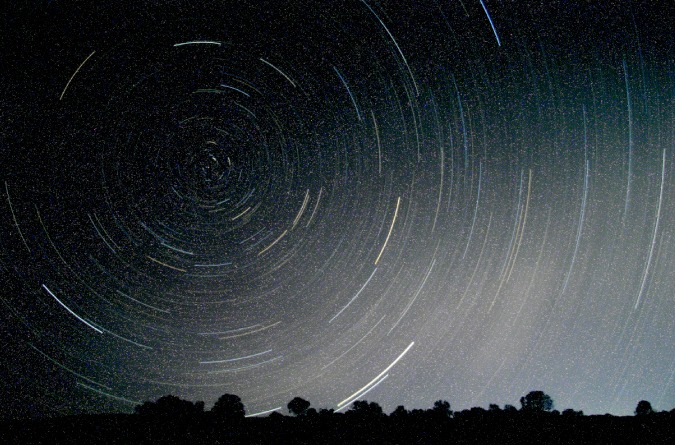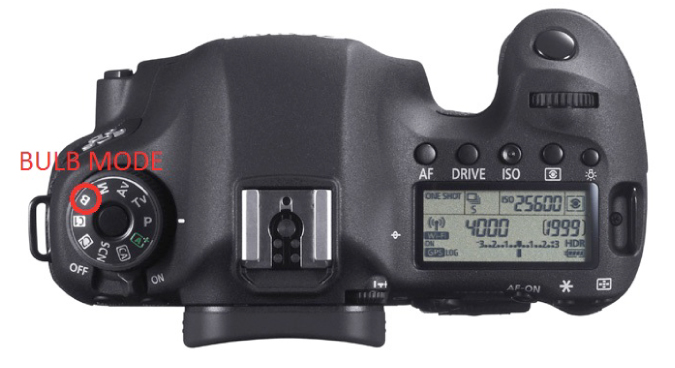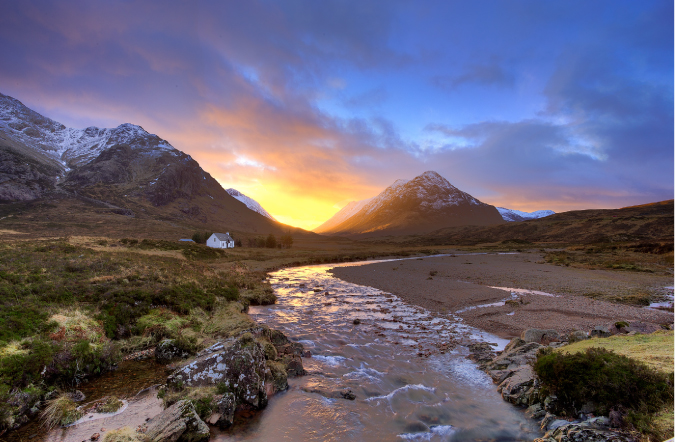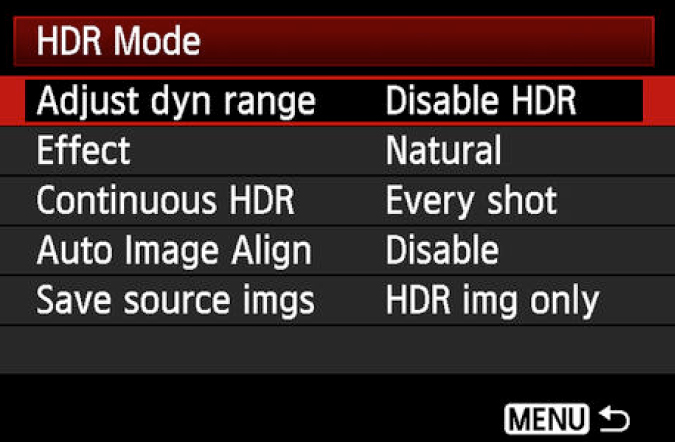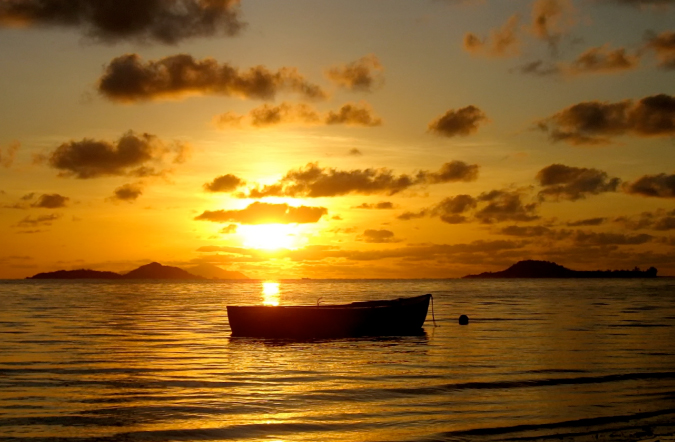
Posted: 12/16/2018 | December 16th, 2018
Boston. Beantown. The town. My hometown.
I love the city. I’m probably biased since I grew up here but I think it’s one of the most underappreciated cities in the entire country. It’s just a wonderful, friendly place to live and visit!
The history, the food, the sports, the community. Boston is like a big small town. It’s one of the best places in the country to visit.
And all the college students here help give the city a permanent youthful energy!
But where is the best place to stay while you’re visiting Boston?
Well, that depends.
On a lot of factors.
So, today, let me break down the best neighborhoods in Boston from a local’s point of view and give you suggested places to stay in each part of town:
Back Bay/Copley
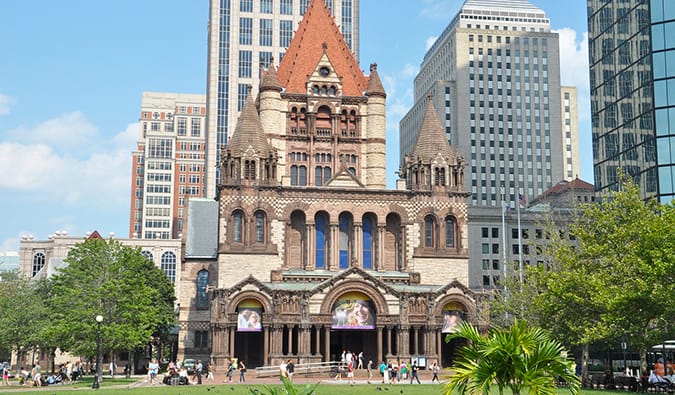
Back Bay is one of the best areas in the city. It an area that covers the happening Copley Square, home to the Boston Public Library and Trinity Church, as well as the beautiful homes on the surrounding streets near the river, the shops and restaurants on Newbury and Boylston, and the shops at Copley Place. It’s one of the most beautiful (and upscale) areas of the city. Fun tip: There’s a farmer’s market in Copley Plaza on Tuesday and Friday afternoons.
Best Places to Stay in Back Bay/Copley
- BUDGET: Garrison Street Apartment – It’s hard to find a super cheap place to say in this neighborhood. This is as close as they come. Located in a historic brick building, these beautiful serviced apartments are just like staying in Airbnb and come with all the amenities of home. There’s also a beautiful rooftop.
- MID-RANGE: Boston Copley House – Copley House is actually a set of studio apartments located in traditional brick row houses, each with fully equipped kitchens and cable TV. The building also has a beautiful rooftop.
- LUXURY:
Downtown

Downtown Boston is the city’s commercial and financial center. It’s one of the oldest parts of the city and is a maze of cobblestone streets and historic buildings against a backdrop of giant modern skyscrapers. The area has really become “hot” the last few years (it was run down when I grew up here) and you’ll find tons of hip cocktail bars and restaurants here. You’ll find lots tourist attractions that make up a section of the Freedom Trail (like the Old South Meeting House, Faneuil Hall, and the Old State House). Plus, it’s right next to Chinatown (good food) and the Commons (the city’s main park!).
Best Places to Stay in Downtown
- BUDGET: Hostelling International Boston – The HI Boston is one of the best in the HI chain. It only opened 6 years ago so it’s still pretty new! It has a kitchen and common area as well as rooms for meetings. The beds come with a personal shelf, a reading light, and power outlets. It’s the best hostel in the city.
- BUDGET #2: Found Hotel Boston Commons – This hotel offers dorm rooms in addition to privates, so it’s a great option if you’re on a budget. You’ll get a bunk bed with a curtain for privacy and your own locker. The private rooms are pretty small, but they’re clean and newly renovated and come with a desk. I love all the wood finishings throughout the building.
- MID-RANGE: The Godfrey Hotel Boston – This boutique hotel has a stylish lobby as well as a fun bar serving up delicious drinks. The rooms have everything you need, include a desk area and have lots of natural light.
- LUXURY: The Langham – This is a traditional-style hotel with a gorgeous ballroom, a chocolate bar on Saturdays in Café Fleuri, huge opulant rooms with super plush beds and pillows, incredible staff, and a gran entrance way. It’s a splurge!
Brighton/Allston

Brighton and Allston are two neighborhoods known for their large student and recent graduate populations. I group them together because….well, they’re super close and we locals tend to group them together as one area! Because of this, the restaurants and bars cater mostly to the 20-something crowd. There’s not a lot of “things to do” in this part of town It’s just more a cool neighborhood to stay in with cheaper nightlife and dining options than elsewhere. You won’t find a lot of tourists here.
Best Places to Stay in Brighton/Allston
- BUDGET: The Farrington Inn – This small guesthouse also has dorm rooms, making it one of the most affordable options in Brighton/Allston. All the rooms are air-conditioned and some come with kitchenettes. There’s free wifi too.
- MID-RANGE: Studio Allston Hotel Boston – This ultra artsy hotel appeals to young travelers, who like making use of the common areas and the outdoor patio (complete with a rum bar). Each room comes with its own unique artwork! It’s fun place to stay, even if the rooms are kind of small!
- LUXURY: AC Hotel by Marriott Boston Cleveland Circle – This hotel has convenient access to all of the city via the MBTA line and the GreenLine. It’s home to a nice business center and a 24-hour fitness center as well. It’s your standard chain hotel really but I like it for the location and lounge.
Fenway

This area is home of the Red Sox and Fenway Park. However, Fenway is also one of the city’s most academic and cultural areas, with nearly a dozen colleges and universities located around here. In recent years, it’s beacon the yuppie capital of the city and tons of condos, new restaurants, and restaruant options have opened up. It’s a nightlife mecca, especially for the clubs and bars along Lansdowne Street. Nearby, there’s Kenmore Square, where you’ll find some pretty great museums like the Museum of Fine Arts and Symphony Hall.
Best Places to Stay in Fenway
- BUDGET HOTEL: Residence Inn by Marriott Boston Back Bay/Fenway – This is an extended-stay location near Fenway Park, with studio suites, one bedroom suites, and two bedroom suites. Each one has a kitchenette where you can save money cooking at home rather than eating out. Perfect for when you’re traveling with groups!
- MID-RANGE: The Verb – This might be the hippest place to stay in Boston’s city center, complete with a large vinyl library exclusively for guests. There’s definitely a party vibe around the pool in the summer. It has wonderful rooms with natural life, art, and modern fixtures; free WiFi; and a fantastic fitness center.
- LUXURY: Hotel Commonwealth – This swanky spot is the official hotel of the Boston Red Sox. The rooms are modern and ultra-luxurious coming with plush covers and usually a couch. The on site restaurant is the swanky Eastern Standard too. The hotel also has a great lounge overlooking the city.
North End

The North End neighborhood is the oldest in the city and is commonly referred to as “Little Italy” since it’s where all the Italian immigrants in the 19th century settled (as such it has the best Italian food in the city). This waterfront community has cobblestone streets and plenty of good reasons to visit, including the Paul Revere House and Christ Church, with the oldest set of ringing bells in North America.
Best Places to Stay in North End
- MID-RANGE: Battery Wharf Hotel – This place isn’t exactly budget, but the North End doesn’t really do budget. The rooms come with large TVs, free WiFi, and impressively comfortable beds. The Aragosta Bar and Bistro serves a fantastic Italian breakfast, and the Lobby Lounge does cocktails and candy (seriously). Even better: The spa is top-notch.
- LUXURY: Boston Yacht Haven – If you want a room with a view, this is it. The Boston Yacht Haven is right on the water, and it even has its own marina (where you’ll definitely see a few super yachts around). The rooms are crazy posh, and if you can, request one with a harbor view and balcony. There’s free breakfast here and other perks include free WiFi, board games, and in-room microwave and fridge.
Cambridge/Harvard Square
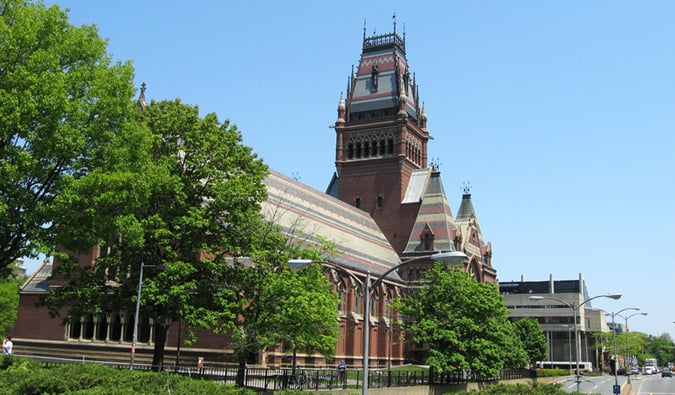
Home to Harvard and MIT, Cambridge is a quintessential student town along the Charles River. With its grassy parks and tidy town squares, it might seem like a quiet place, but there’s a great arts scene, plenty of museums, and lots of live music. There’s a restaurant for every desire in this part of town and I think it’s one of the most culturally diverse parts of the city. This is the hip spot to be.
Best Places to Stay in Cambridge/Harvard Square
- BUDGET: Irving House at Harvard – This is more a B&B than anything else with a cute and cozy atomosphre, comfy beds, desk, couches, a shared kitchen space, and onsite laundry facilities. It’s a peaceful place to stay.
- MID-RANGE: Porter Square Hotel – Near Harvard and Massachusetts Institute of Technology, Porter Square Hotel has a lovely patio and garden during the summer months. Other than that, it’s a pretty standard hotel with spacious rooms and lots of natural light. It’s clean, has friendly staff, and is one of the more affordable hotels in the area.
- LUXURY: The Kendall Hotel – This gorgeous Victorian-style boutique hotel was built in 1894 and is located next to the MIT campus. Each room is decorated individually with unique art. The beds are wonderfully soft. The breakfast buffet is great, and there’s a “wine hour” each night on the rooftop. Splurge here!
Seaport

The Seaport is home high-end restaurants and fancy cocktail lounges. When I grew up in the city, there was nothing here but the Children’s museum and a lot of empty space. Now it’s one of the coolest parts of the city with tons of condos, restaurants, museums, the awesome outdoor space Lawn on D, and the Harpoon Brewery. Every time I come back here, I’m just shocked by the change that’s happened!
Best Places to Stay in Seaport
- BUDGET: Staypineapple at the Alise Boston – A trendy spot for young travelers, the Staypineapple has a lot of fun perks, like dog-friendly rooms and bicycle rentals. Fluffy towels and bathrobes are a nice touch.
- MID-RANGE: Encore Bed & Breakfast – Every contemporary room at this B&B has wonderful views of Boston’s skyline, as well as queen-sized beds and great in-room sound systems. A nice breakfast with fresh pastries and coffee is served each morning! Free WiFi.
- LUXURY: Aloft Boston Seaport District – Aloft hotels are always a good idea, and this one is no exception. All rooms have their signature beds and large walk-in showers, and the WXYZ Bar is an awesome spot to grab an evening drink.
Brookline
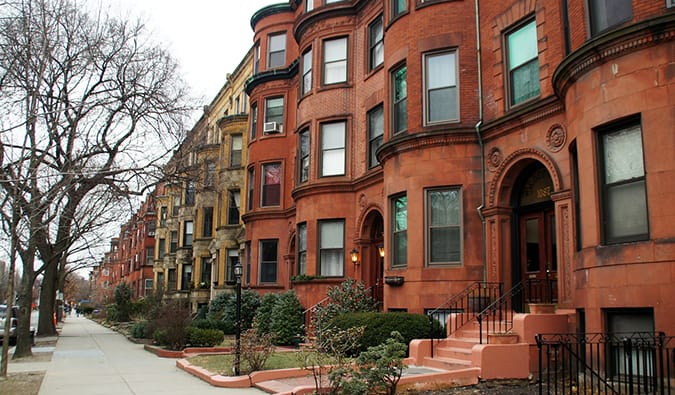
Brookline is a big town but part of it buttresses right against Boston and that area has a quiet, small-town feel. It’s not overly touristy and mostly a residential area with quiet streets, brick apartment buildings, shops, cafes, and restaurants. Walk around and visit the many small shops and cafes, or grab lunch at one of the many amazing restaurants (like yummy quesadillas at El Centro). There’s a T line that runs through the area so it’s easy to get downtown!
Best Places to Stay in Brookline
- BUDGET: Coolidge Corner Guest House – This little place is a gem! It’s in a quiet neighborhood, it’s comfortable and the owners are friendly. The rooms have very traditional décor, and they are all different. It includes free breakfast too.
- MID-RANGE: Courtyard by Marriott Boston Brookline – All the rooms at the Courtyard come with a work desk, a nice seating area complete with a sofa, and a coffee maker. The fitness center has cardio machines and free weights.
- LUXURY: The Bertram Inn – This small Inn has just 14 rooms. Each room is different – some are decorated with fancy beds (they even have old fashioned bed posts on them), curtains, and luxury leather chairs. Others are simple and floral. But, they are all “old school” and antique. It’s super cozy…and super luxurious. The hotel also has massage services onsite and free WiFi as well as a lovely patio overlooking the garden.
Boston is one of the best places in the country. Not only does it have picturesque neighborhoods, top-notch dining and bars, but it is steeped in history. There’s also a ton of free things to do in Boston so it won’t hit your wallet hard. One of the things I love so much about Boston is that, for one of the biggest cities in the country, each little neighborhood has its own small-town feel and you feel like this city is a collection of small towns more than a giant metropolis.
Book Your Trip to Boston: Logistical Tips and Tricks
Book Your Flight
Find a cheap flight by using Skyscanner or Momondo. They are my two favorite search engines because they search websites and airlines around the globe so you always know no stone is left unturned.
Book Your Accommodation
You can book your hostel with Hostelworld. If you want to stay somewhere other than a hostel, use Booking.com as they consistently return the cheapest rates for guesthouses and cheap hotels. I use them all the time.
Don’t Forget Travel Insurance
Travel insurance will protect you against illness, injury, theft, and cancellations. It’s comprehensive protection in case anything goes wrong. I never go on a trip without it as I’ve had to use it many times in the past. I’ve been using World Nomads for ten years. My favorite companies that offer the best service and value are:
- World Nomads (for everyone below 70)
- Insure My Trip (for those over 70)
Looking for the best companies to save money with?
Check out my resource page for the best companies to use when you travel! I list all the ones I use to save money when I travel – and I think will help you too!
Looking for more information on visiting Boston?
Check out my in-depth destination guide to Boston with more tips on what to see, do, costs, ways to save, and much, much more!
The post The Best Neighborhoods in Boston: Where to Stay on Your Visit appeared first on Nomadic Matt's Travel Site.
